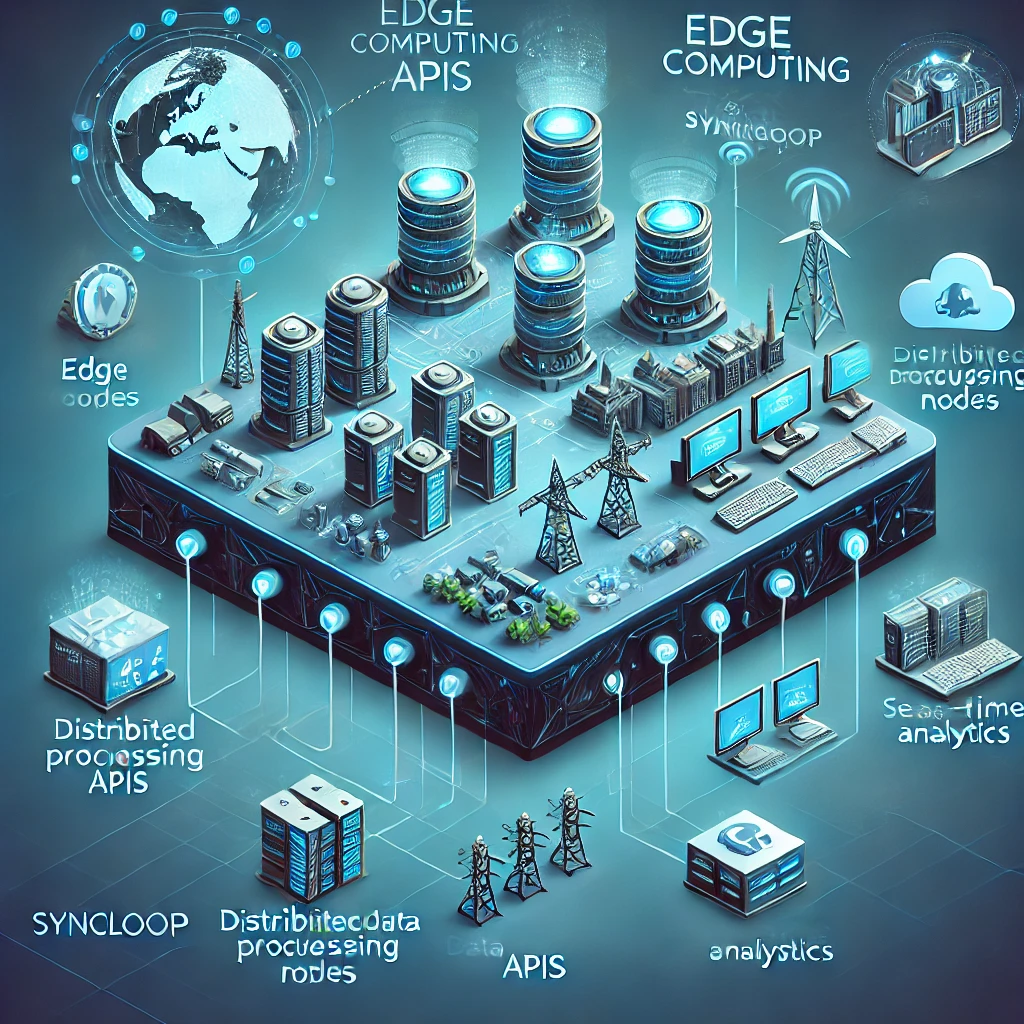Exploring Edge Computing APIs Powered by Syncloop

Syncloop, a leading API development platform, empowers developers to create robust edge computing APIs. This blog explores how Syncloop supports edge computing, its key features, and best practices for building scalable edge APIs.
Why Edge Computing APIs Are Essential
Edge computing APIs provide the framework for leveraging distributed computing resources effectively. They enable:
- Low-Latency Data Processing: Real-time processing close to the data source for faster responses.
- Efficient Resource Utilization: Reducing the load on centralized servers by distributing computations to edge nodes.
- Enhanced Scalability: Supporting a growing number of devices and applications across edge locations.
- Improved Reliability: Ensuring continuity by processing data locally during network outages.
How Syncloop Powers Edge Computing APIs
Syncloop offers a comprehensive toolkit for designing, deploying, and managing APIs optimized for edge computing:
1. Edge Node Integration
Syncloop supports the deployment of APIs at edge nodes, enabling data processing closer to end-users and devices.
2. Real-Time Communication
With WebSocket and MQTT protocol support, Syncloop facilitates real-time data exchange between edge devices and applications.
3. Dynamic Data Mapping
Syncloop allows seamless transformation and routing of data between edge nodes and the cloud, ensuring compatibility and consistency.
4. Event-Driven Workflows
The platform’s event-driven architecture enables APIs to trigger workflows based on real-time events at the edge.
5. Caching and Storage
Syncloop APIs leverage local caching at edge locations, reducing latency and improving data availability.
6. Robust Security
With built-in encryption, authentication, and role-based access control (RBAC), Syncloop ensures data and API security across edge nodes.
7. Scalable Infrastructure
Syncloop’s infrastructure scales dynamically, handling increasing volumes of edge data and device connections without compromising performance.
Benefits of Using Syncloop for Edge Computing APIs
1. Faster Data Processing
Syncloop minimizes latency by enabling APIs to process data at the edge, enhancing real-time applications like IoT and streaming.
2. Improved Resource Efficiency
Offloading computations to edge nodes reduces central server load, optimizing resource utilization.
3. Greater Scalability
Syncloop’s architecture supports the growing demand for edge applications and devices, ensuring seamless scaling.
4. Enhanced Reliability
Local processing ensures applications remain functional even during intermittent connectivity to central systems.
5. Secure Data Handling
Advanced security features protect sensitive data and ensure compliance with industry regulations.
Real-World Applications of Syncloop Edge Computing APIs
1. IoT Ecosystems
Syncloop powers APIs for IoT applications, enabling real-time data processing from sensors, devices, and gateways at edge locations.
2. Smart Cities
Edge APIs facilitate traffic management, public safety monitoring, and energy optimization in smart city initiatives.
3. Video Streaming
For streaming platforms, Syncloop APIs process video data at the edge to reduce buffering and enhance viewer experiences.
4. Autonomous Vehicles
Edge APIs enable real-time decision-making in self-driving cars by processing sensor data locally.
5. Retail and E-Commerce
Retailers use Syncloop to process customer interactions and inventory data at edge locations, ensuring faster and more personalized services.
Best Practices for Building Edge Computing APIs with Syncloop
- Leverage Local Processing: Deploy APIs at edge nodes to handle time-sensitive computations and minimize latency.
- Adopt Real-Time Protocols: Use WebSocket or MQTT for efficient and low-latency communication between devices and APIs.
- Secure APIs: Implement encryption, authentication, and RBAC to protect data and ensure secure operations.
- Optimize Data Flows: Use Syncloop’s data mapping tools to streamline data routing between edge nodes and central systems.
- Monitor Performance: Track API usage and edge node performance with Syncloop’s analytics tools to identify and resolve bottlenecks.
- Enable Scalability: Design APIs to handle an increasing number of devices and data streams as edge deployments grow.
Conclusion
Edge computing is redefining the way data is processed and analyzed, and APIs are at the core of this transformation. Syncloop simplifies the development of edge computing APIs, providing tools for real-time communication, scalable deployments, and robust security.
Whether you’re building IoT solutions, smart city systems, or video streaming platforms, Syncloop empowers you to create efficient and scalable edge APIs. Embrace Syncloop to unlock the full potential of edge computing and revolutionize your application architectures.
A conceptual illustration of edge computing architecture with APIs connecting devices, edge nodes, and cloud systems, powered by Syncloop.
Back to Blogs